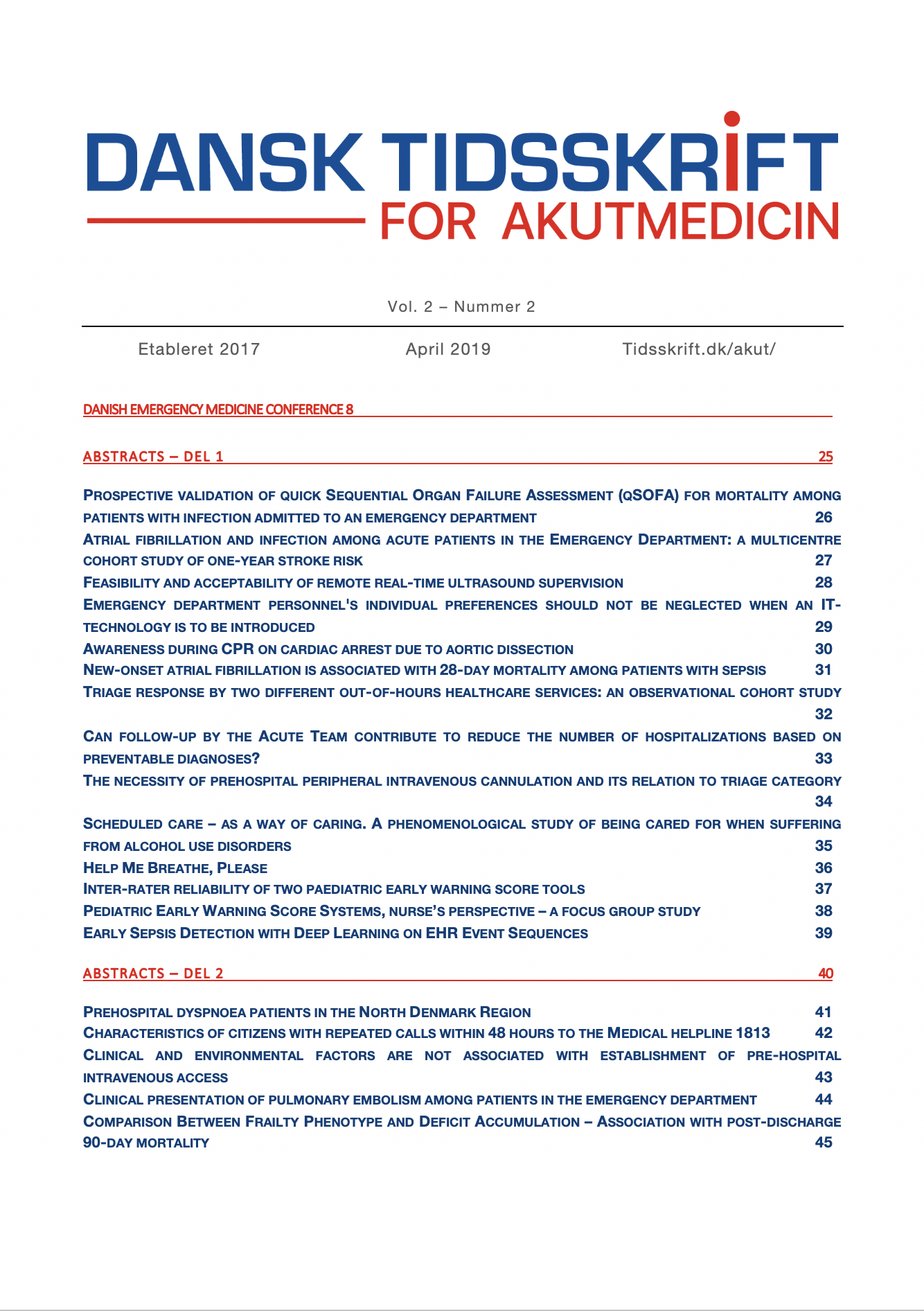Abstract
Background: Paediatric early warning score (PEWS) assessment tools can assist healthcare providers in the timely detection and recognition of subtle patient condition changes signalling clinical deterioration. However, PEWS tools instrument data are only as reliable and accurate as the caregivers who obtain and document the parameters. The aim of this study is to evaluate inter-rater reliability among nurses using PEWS systems.
Method: The study was carried out in five paediatrics departments in the Central Denmark Region. Inter-rater reliability was investigated through parallel observations.
A total of 108 children and 69 nurses participated. Two nurses simultaneously performed a PEWS assessment on the same patient. Before the assessment, the two participating nurses drew lots to decide who would be the active observer. Intraclass correlation coefficient, Fleiss’ κand Bland–Altman limits of agreement were used to determine inter-rater reliability.
Results: The intraclass correlation coefficients for the aggregated PEWS score of the two PEWS models were 0.98 and 0.95, respectively. The κvalue on the individual PEWS measurements ranged from 0.70 to 1.0, indicating good to very good agreement. The nurses assigned the exact same aggregated score for both PEWS models in 76% of the cases. In 98% of the PEWS assessments, the aggregated PEWS scores assigned by the nurses were equal to or below 1 point in both models.
Conclusion: The study showed good to very good interrater reliability in the two PEWS models used in the Central Denmark Region.
Licensed under a Creative Commons Attribution 4.0 International License (CC BY 4.0).
© The Author(s).

